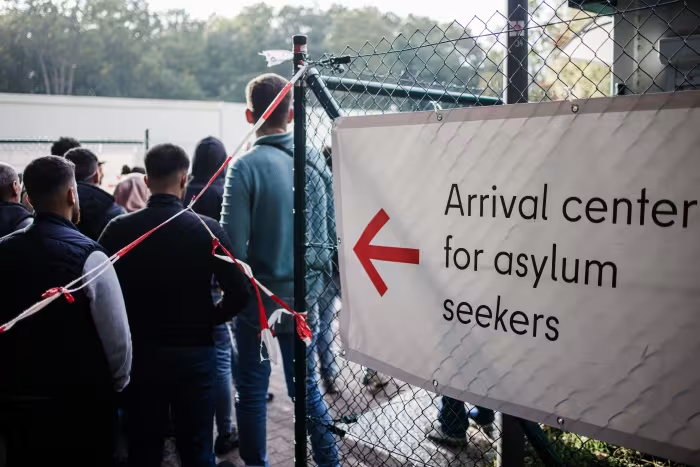Canada is known for its welcoming stance on immigration, and understanding the Immigration Levels Plan is key for anyone interested in moving there. This plan sets clear targets for how many immigrants Canada aims to accept each year, guiding decisions on who can come and settle in the country. It is designed to meet labor market needs, support economic growth, and help families reunite.
You will find that this plan balances various types of immigration, including skilled workers, family members, and refugees. Each group plays a vital role in building a diverse and thriving society. Learning about this plan can help you understand how to navigate the immigration process effectively.
Whether you are considering moving to Canada or simply want to know more about its immigration policies, this information will provide valuable insights. The Immigration Levels Plan not only affects individuals and families but also shapes the future of Canadian communities.
Overview of Canada’s Immigration Levels Plan
Canada’s Immigration Levels Plan is designed to manage and increase the number of immigrants each year. This plan helps fulfill labor needs and supports family reunification. You will find important details about the targets for immigration and its economic impact below.
Targets for Immigration
The Immigration Levels Plan sets specific targets for how many new immigrants Canada wants each year.
- For 2024, the target is to welcome over 500,000 newcomers.
- This includes skilled workers, family members, refugees, and international students.
The plan aims to address gaps in the labor market. It also focuses on provinces that need more workers. By having clear targets, Canada can better manage this flow and ensure that new arrivals can successfully integrate.
Economic Impact
Immigration plays a key role in Canada’s economy. Newcomers contribute to the workforce and help fill job shortages.
- Increased labor force: Immigrants help support industries that are struggling to find workers.
- Boosting innovation: Diverse backgrounds bring new ideas, enhancing creativity and innovation in the workplace.
Immigration also helps support population growth as Canada faces an aging population. More workers mean more economic activity, which benefits everyone in the country.
Eligibility Criteria and Immigration Categories
Canada offers various pathways for immigration, each with specific criteria. Understanding these categories can help you identify the best option for your situation.
Federal Skilled Worker Program
The Federal Skilled Worker Program (FSWP) targets skilled workers who want to live in Canada. To qualify, you need to meet several requirements. These include:
- Work experience: You must have at least one year of full-time work experience in a skilled occupation.
- Language ability: You must prove your English or French skills through a recognized test, achieving at least a Canadian Language Benchmark (CLB) 7.
- Education: You need a Canadian secondary school diploma or an equivalent foreign credential.
Additional factors may include age, adaptability, and arranged employment in Canada. Applicants are assessed based on a points system.
Canadian Experience Class
The Canadian Experience Class (CEC) is for individuals who have experience working in Canada. It allows you to apply for permanent residency if you have the following:
- Work experience: You must have at least one year of full-time employment in Canada within the last three years.
- Language skills: Depending on your job, you should meet different language requirements, usually CLB 7 for skilled jobs or CLB 5 for non-skilled jobs.
This program emphasizes the integration of skilled workers into Canadian society due to their previous Canadian work experience. You do not need a job offer to apply.
Provincial Nominee Program
The Provincial Nominee Program (PNP) allows provinces and territories to nominate candidates based on local labor market needs. Each province has its own criteria, but you typically need:
- Job offer: Many provinces require a job offer from a local employer.
- Work experience: Relevant work experience in your field is necessary.
- Intention to reside: You must show your intent to live in the province that nominates you.
Applying through a PNP can be a faster route to permanent residency. Each province has its own application process and criteria.
Family Sponsorship
Family Sponsorship helps reunite families by allowing Canadian citizens and permanent residents to sponsor relatives. Eligible sponsors can include:
- Spouses and partners: You can sponsor a spouse, common-law partner, or conjugal partner.
- Children: You can sponsor dependent children or adopted children.
- Other relatives: In some cases, you may sponsor other relatives, such as parents or grandparents.
To be a sponsor, you must prove your ability to support your relative financially. The sponsored person must meet specific eligibility criteria as well.
Application Process
The application process for immigration to Canada involves gathering the right documents and understanding the associated fees. You also need to be aware of the expected processing times for your application.
Documentation and Fees
When applying for immigration, you must prepare several key documents. These may include:
- Proof of Identity: This could be a passport or birth certificate.
- Education Credentials: You may need to provide degrees or diplomas, assessed by designated organizations.
- Work Experience: A detailed resume or reference letters may show your previous job roles.
Fees vary based on the type of application. For example, the fee for an individual applying as a skilled worker can be around CAD 1,325. Additional fees may apply for family members. Don’t forget to check if you need to pay for medical exams or police checks.
Processing Times
Processing times can differ depending on your application type and where you are applying from. Generally, an application for permanent residency might take between 6 to 12 months.
You can check the specific processing times on the official Canada immigration website. Keep in mind that delays can occur due to background checks or missing documents. Staying organized and responding quickly to requests can help speed up your process.
Government Policies and Future Projections
Canada’s immigration policies are designed to support the economy and promote diversity. The government aims to attract skilled workers, family members, and refugees through various programs.
Key policies include:
- Express Entry: A system for skilled workers to apply for permanent residency.
- Provincial Nominee Programs: Allows provinces to select immigrants based on local labor needs.
- Family Sponsorship: Helps families reunite by allowing citizens to sponsor relatives.
Future projections indicate that Canada will continue to increase immigration levels. The goal is to reach over 500,000 newcomers annually by 2025. This is part of a commitment to address labor shortages and support economic growth.
Factors influencing these policies include:
- Labor Market Needs: Canada faces a shortage of workers in various sectors, such as technology and healthcare.
- Aging Population: A growing number of retirees means more workers are needed to maintain economic stability.
- Global Events: Crises around the world can lead to increased refugee admissions.
You can expect these policies to adapt as Canada responds to changing social and economic conditions. Regular updates from the government will provide more clarity on future immigration plans.


